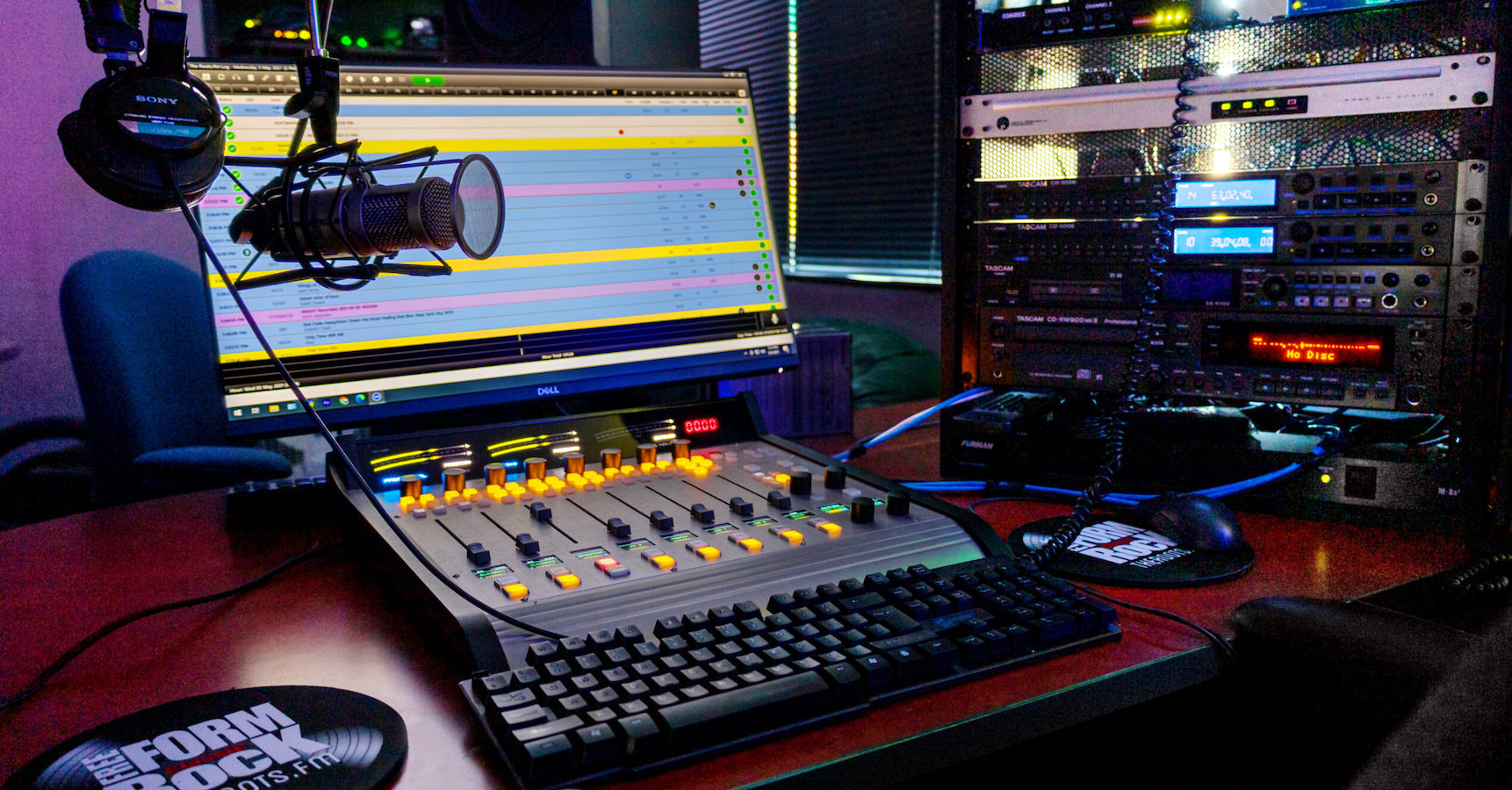
The Story Behind The Roots
The Roots.Fm was created by a group of aging rockers, frustrated by the lack of a radio format focusing on the albums we grew up with in the 1960s and 1970s. Back in the day, we called the music format Progressive FM Rock, that later morphed into Album-oriented Rock. We were not interested in Classic Rock because it is the repetitive, Top Forty hits of the Album Rock era, repeated over and over again.
Variety and depth are the key
Most Classic Rock stations play 500 songs repeatedly. The Roots.Fm has a core playlist of over 3,000 songs. We also have specialty playlists for our Blue Monday blues show, Friday night Happy Hour and another softer playlist for Sweet Rock Sunday Morning. All this diversified music is sourced from our 20,000+ album collection. All of this wonderful music is constantly rotated, rested and reviewed in an effort to play newly discovered music that will leave our listeners saying, “Oh Wow!”
The Roots.Fm is listener supported and commercial free
We strongly believe that the most creative radio available today is produced by community broadcast and Internet stations. These stations are usually listener supported and operated by volunteers. Community stations serve special communities of interest. They broadcast content that is popular and relevant to a specific audience but is often overlooked by commercial or mass-media broadcasters. Community radio stations are operated, owned, and influenced by the communities they serve vs. national broadcast corporate chain owners. They are generally nonprofit and provide a mechanism for enabling individuals, groups, and communities to tell their own stories, to share experiences and, in a media-rich world, to become creators and contributors of media. That is what The Roots.Fm is trying to become.Our Roots staff is made up of volunteers who donate their time to keep The Roots rocking. Many have had extensive professional radio careers, or specialists in different styles of music. Other volunteers come from broadcast or IT engineering backgrounds. Our Roots studio furniture was built by a Roots member who is a master cabinet maker. Other volunteers assist our social media operations, serve as station ambassadors or provide graphic design services.
Why does The Roots sound so much better than other broadcast or streaming stations?
We focus a large percentage of our efforts focusing on our audio quality. Our streaming consultant Greg Ogonowski advised us to stay digital all the way to your radio. Six years ago, when we started The Roots we had to convert CD audio from digital back to analog because our old studio was analog. This process would add about 4 different digital to analog conversions on the way to your ears. Audio format conversions can degrade the quality of the audio. So now we stay digital all the way to your ears. We believe our listeners can hear the difference.All of our music starts as either a vinyl LP or a CD. We never play MP3 files. We try very hard to make out of print LPs sound their best. We start by cleaning the LP to remove dust and dirt. Then we digitize the LP creating an uncompressed .Wav file. We bring that Wav file into Adobe Audition so we can restore the audio. With Audition we “sample” a small section of the LP to capture a sample of the noise we want removed. Adobe then does its digital magic and the results are quite impressive. After we restore the file and enter all the metadata, we load the new songs into our “Media Finder,” where our hosts can search through 50+ years of music to locate and play your favorite songs.
Our playout systems are provided by PlayoutONE Pro. By the time you read this, we will have two redundant PlayoutONE systems. If one of our servers fails, the backup system will take over automatically. We also have redundant Internet connections from AT&T fiber and Spectrum to relay our audio to Securenet Systems in Florida.
Starting at the top of our equipment rack is a Grace Digital radio. This is how we listen to The Roots. Under the Grace is our cue speaker and small Shure mic mixer. Below those is a 2-line SIP phone hybrid and a Tieline audio codec that we use for live remote broadcasts. The blue boxes are digital switching and distribution amps from Henry Engineering. The white single rack unit is the digital mix engine/blade from PR&E/Wheatstone. All our source devices plug into this box and are connected by CAT5 cable. Not visible are audio processing systems from Orban and encoders from StreamS.
The rest of the rack is filled with Tascam CD players, a digital recorder and a CD recorder. To the right (out of frame) are two Pioneer turntables. Under the turntables are phono pre-amps that feed into the mix engine.
The one the left is our digital audio console from PR&G / Wheatstone. This system uses AoIP and can be networked to other studios. Designed and built in the USA I might add. And finally, the large computer monitor is what our live hosts use to control our PlayoutONE Pro playout system. Our curators build custom sets and test transitions between songs or dig down deep into our library of over 20,000 albums and CDs.